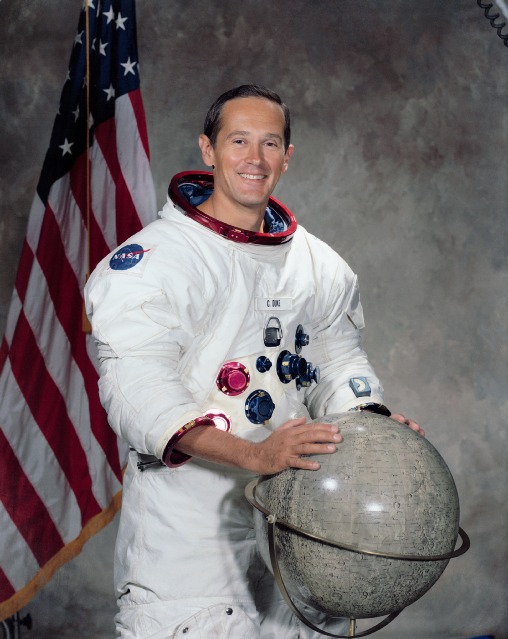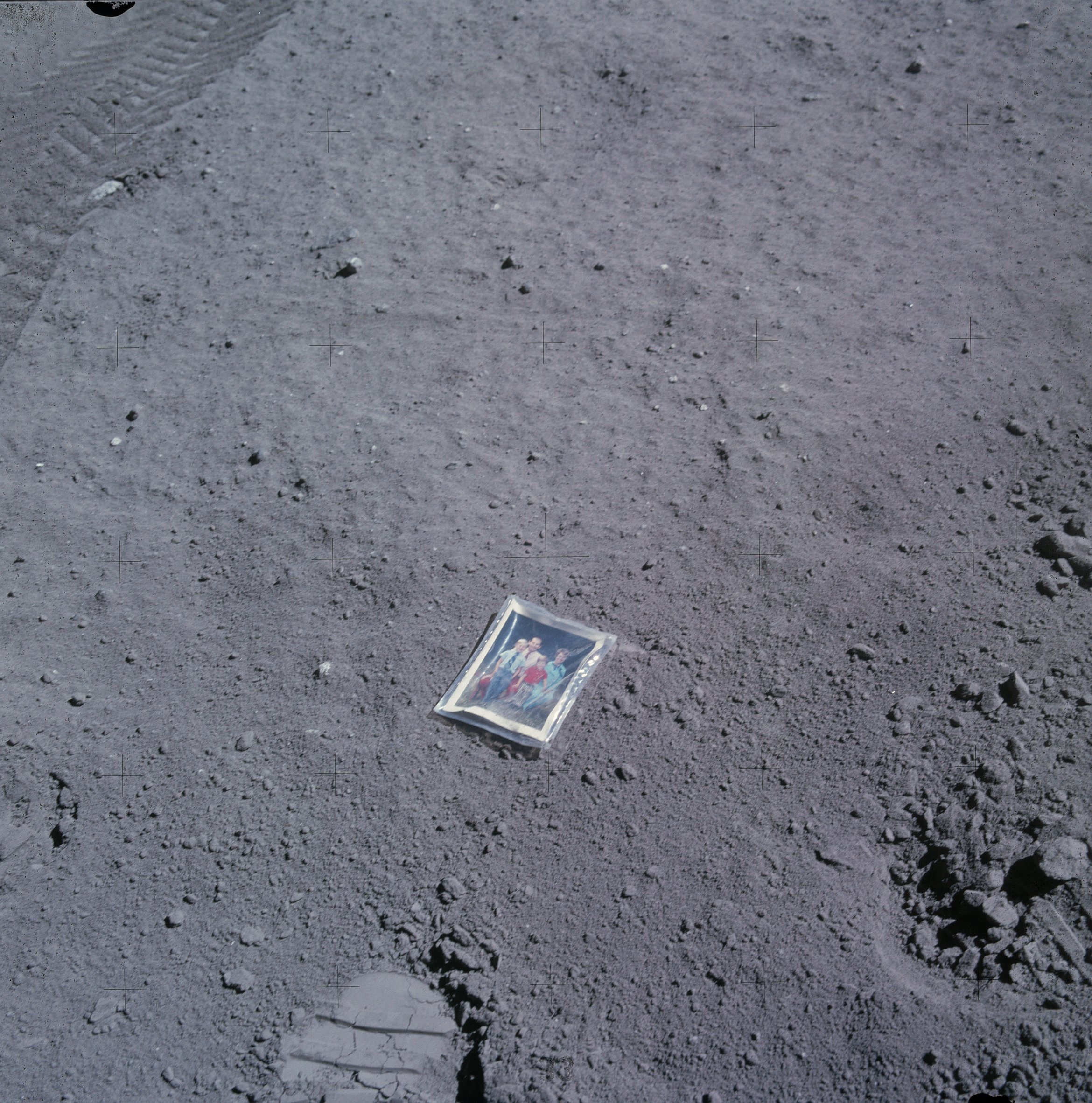Charles Duke: From Capcom to Moonwalker

Charles M. Duke Jr. is a NASA astronaut who explored the moon during Apollo 16, but he is also known for his crucial role as Capcom — the spacecraft communicator — during the hair-raising landing of Apollo 11.
Duke and his Apollo 16 commander, John Young, spent more than 20 hours on the moon in the Descartes region. According to Duke, he took the only videos of the lunar rover "in action" as it skidded across the surface.
Duke retired from NASA in 1975 to enter private business. Today, he is the chair of the Astronaut Scholarship Foundation that is based in Titusville, Fla., not far from where his spacecraft journeyed to the moon.
'Twangquility Base'
Duke entered the Air Force in 1957 after completing his training at the Naval Academy. His first assignment after advanced training was three years as a fighter interceptor pilot with a squadron in Ramstein Air Base, Germany. When he was selected as an astronaut in 1966, Duke was an instructor at the Air Force Aerospace Research Pilot School — a place he had graduated from just the year before.
At NASA, he was a member of the astronaut support crew for the Apollo 10 flight, and then was assigned as Capcom for Apollo 11, the first landing on the moon. According to Duke, it was Neil Armstrong himself — the first man on the moon — who requested Duke's presence on the radio.
Apollo 11 had a dramatic landing. The crew was several miles off course, battling computer overload alarms and also running low on fuel. The lunar module touched down on the surface with less than 30 seconds' fuel remaining in the tanks.
"Houston, Tranquility Base here, the Eagle has landed," Armstrong radioed on July 20, 1969.
In Duke's excitement, he fumbled the communications back.
"I was so excited, I couldn’t get out 'Tranquility Base.' It came out sort of like 'Twangquility,' you know," Duke said in an interview with NASA in 1999.
"It was, 'Roger, Twangquility Base. We copy you down. We’ve got a bunch of guys about to turn blue. But we’re breathing again.' And I believe that’s true ... I mean, we were — I was holding my breath, you know, because we were close."
Measles and engines
Duke was subsequently a backup member of the Apollo 13 crew, where he is most famous for accidentally exposing prime crew member Ken Mattingly to German measles. Duke had been exposed by his 3-year-old son.
Duke, who never had the condition before and got ill himself, went to the NASA flight surgeon. The doctor began testing all the astronauts and discovered that Mattingly had no immunity either. Mattingly was yanked from the Apollo 13 flight just days before launch.
The two men were selected as prime crew members for Apollo 16, along with John Young as commander. They lifted off on April 16, 1972, and reached lunar orbit April 20.
Shortly after the lunar module Orion separated from the command module Casper, Mattingly discovered that the command module engine would vibrate unusuallywhen he used backup system controls.
"So, I mean, our hearts sank. If your heart can sink to the bottom of your boots in zero gravity ours did, because ... there we were, you know, two years of training, 240,000 miles away, an hour before the landing on an orbit," Duke recalled.
"You can look down at your landing site, eight miles beneath you, and they’re about to tell you to come home. And that’s what we thought was going to happen because it was, according to mission rules, abort."
Mission Control took hours to make a decision, but came back saying the data showed it was safe to make a landing. Young and Duke gleefully touched down on the surface to begin explorations.

'Enthusiasm and humor'
Duke and Young spent more than 20 hours in the Descartes highlands, spread out over three moonwalks. The crew's primary goal was to seek volcanic rocks, and they had received countless hours of geology training to assist them in that objective. They only found sedimentary rocks, however.
Overall, the mission went smoothly with a few small snags: one astronaut broke a cover on the lunar rover's wheel, which meant every drive covered the astronauts with regolith (moon soil.)
Young also accidentally pulled a vital cable from a science experiment because it was hard for astronauts to see their feet as they walked around on the surface. On his last day on the moon, Duke placed a picture of his family on the surface of the moon. The photo includes Duke, his wife, Dorothy, and their sons Charles and Thomas. Then he walked away, leaving the picture behind.
Duke, Young and Mattingly splashed down safely April 27, 1972. Duke remained with the program three more years before retiring and undertaking several private initiatives. His work after NASA has spanned the fields of investment, real estate and even beverage distribution.
Today, Duke still speaks regularly and travels to astronaut shows despite his advanced age. "Duke, along with astronaut John Young, performed the Apollo mission with an enthusiasm and humor that entranced their vast TV audience. He has been delighting audiences ever since," Duke's website states.
— Elizabeth Howell, SPACE.com Contributor
Join our Space Forums to keep talking space on the latest missions, night sky and more! And if you have a news tip, correction or comment, let us know at: community@space.com.
Get the Space.com Newsletter
Breaking space news, the latest updates on rocket launches, skywatching events and more!

Elizabeth Howell (she/her), Ph.D., was a staff writer in the spaceflight channel between 2022 and 2024 specializing in Canadian space news. She was contributing writer for Space.com for 10 years from 2012 to 2024. Elizabeth's reporting includes multiple exclusives with the White House, leading world coverage about a lost-and-found space tomato on the International Space Station, witnessing five human spaceflight launches on two continents, flying parabolic, working inside a spacesuit, and participating in a simulated Mars mission. Her latest book, "Why Am I Taller?" (ECW Press, 2022) is co-written with astronaut Dave Williams.










